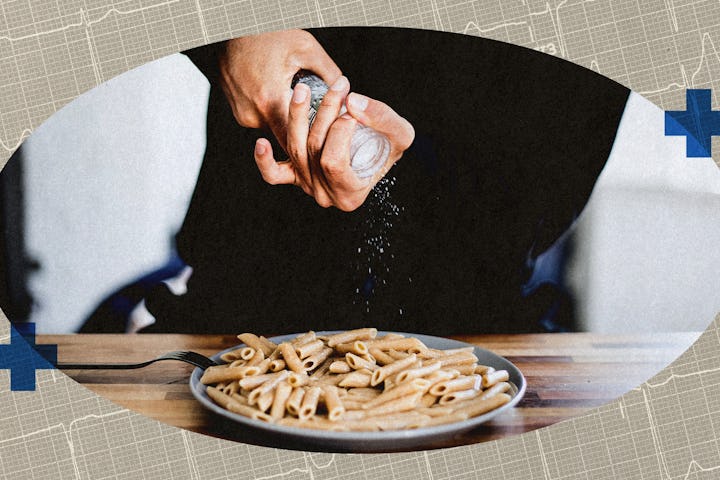A Salt-Heavy Diet Is Now Linked To A Higher Risk Of This Common Disease
A new study highlights yet another reason to be mindful of how much sodium you consume.

We all know that too much salt is bad for our hearts, and it increases the risk of high blood pressure, heart disease, and stroke. But a new study shows that eating too much salt is linked to a higher risk of another disease: type 2 diabetes.
For the study, published in the journal Mayo Clinic Proceedings, researchers asked more than 400,000 adults participating in the UK Biobank about how often they add salt to their food. They followed up with those participants after a median of 11.8 years to see if they developed type 2 diabetes, which more than 13,000 of them did.
The researchers found that compared to people who “never” or “rarely” added salt to their meals, those who “sometimes” added salt had a 13% higher risk of developing type 2 diabetes over the study period. Those who “usually” did had a 20% higher risk, and those who “always” did had a 39% higher risk.
“We already know that limiting salt can reduce the risk of cardiovascular diseases and hypertension, but this study shows for the first time that taking the saltshaker off the table can help prevent type 2 diabetes as well,” lead author Lu Qi, M.D., Ph.D., a professor at the Tulane University School of Public Health and Tropical Medicine, said in a press release.
The average American eats 3,400 milligrams of salt per day, but the American Heart Association recommends eating no more than 1,500 milligrams per day. Nine out of 10 Americans consume too much salt. And too much salt also puts you at risk for kidney disease, osteoporosis, kidney stones, and stomach cancer.
It’s not entirely clear why salt is linked to a higher risk of type 2 diabetes. But Qi suspects it may be because people eat more when their food is saltier, making it more likely that they’ll develop risk factors for type 2 diabetes like obesity and inflammation. This is supported by the fact that Qi’s team found a link between higher BMI and waist-to-hip ratio and frequently adding salt to food.
It’s worth noting that the researchers didn’t look at how much total salt the participants ate per day but only salt they added to food themselves, which, according to the study, is a “surrogate marker for a person’s long-term salt taste preference and sodium intake.” However, only 11% of salt that Americans consume is from adding it during cooking or eating. More than 14% occurs naturally, but more than a whopping 70% comes from processed and restaurant foods. Additionally, it’s possible that the people who added more salt to their food also followed unhealthier diets in general, which the researchers weren’t able to control for.
Because of this, the research team’s next step is to run a clinical trial in which they prescribe the amount of salt participants eat.
If you want to lower the amount of salt in your diet, limit how often you eat out, choose low-sodium versions of your favorite processed foods, and eat fresh foods as often as possible. Before you add salt to your meals, consider whether adding other herbs or spices could give them the kick they need. And to lower your risk of type 2 diabetes, make sure you’re staying active and consider losing excess weight — by changing your lifestyle, not yo-yo dieting.